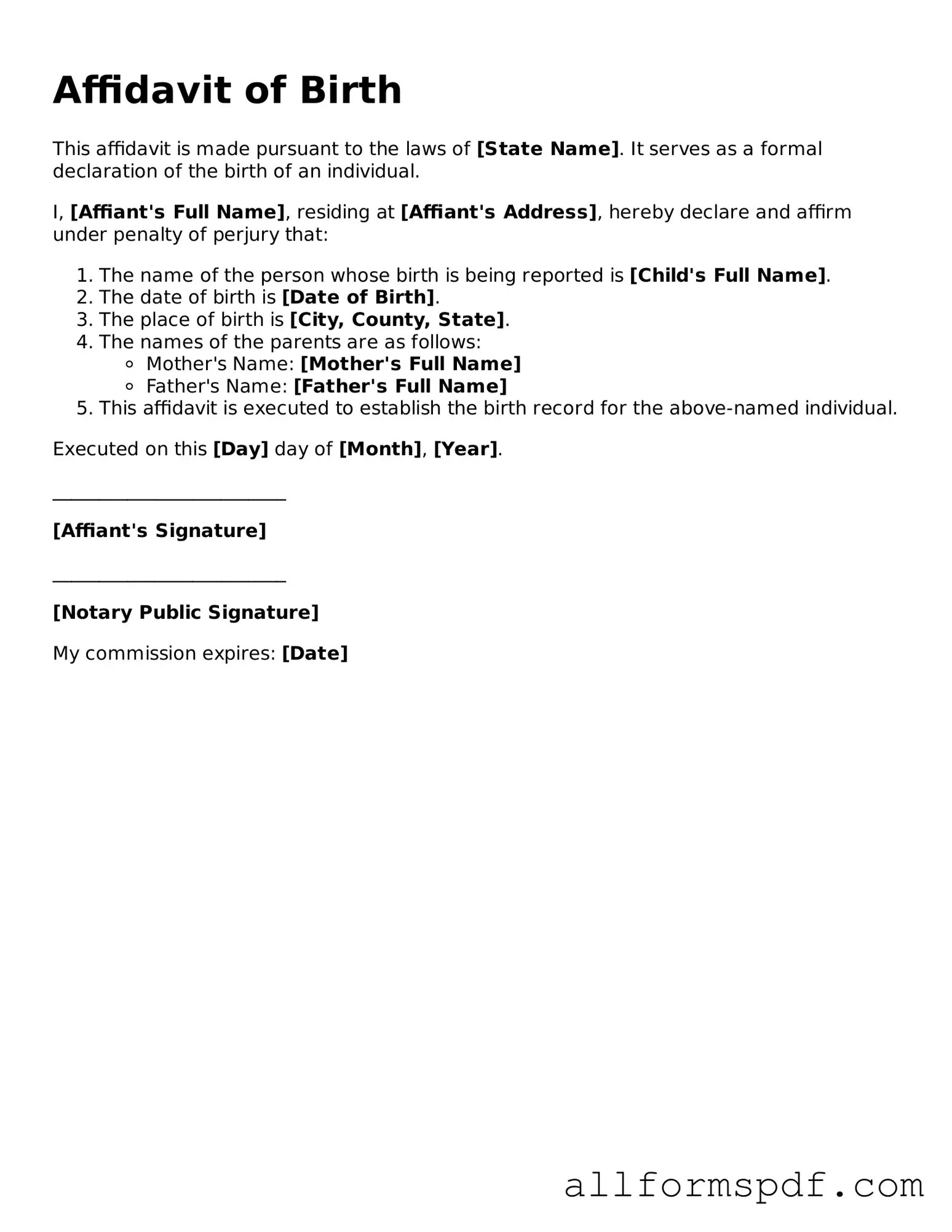Filling out the Affidavit of Birth form can be a straightforward process, but many people still make common mistakes. One frequent error is providing inaccurate personal information. This can include misspelling names or incorrectly entering dates of birth. Such mistakes can lead to delays or complications in processing the affidavit.
Another common mistake is failing to sign the document. An unsigned affidavit is not valid. It's essential to ensure that all required signatures are in place before submitting the form. Additionally, forgetting to date the affidavit can also create issues. Without a date, it may be unclear when the information was provided, which can complicate matters.
Many individuals overlook the importance of including supporting documents. The affidavit often requires proof of identity or other relevant information. Not attaching these documents can result in the form being rejected. Always check the requirements and make sure to include everything necessary.
People also tend to rush through the form, leading to incomplete sections. Leaving out crucial information can create problems down the line. Take your time to read through each section and ensure that all parts are filled out completely.
Another mistake is not reviewing the completed form before submission. Errors can easily slip through the cracks if the form isn’t double-checked. A quick review can catch mistakes that might otherwise cause delays or issues in processing.
Lastly, some individuals may not be aware of the specific requirements for their state. Each state may have different rules regarding the Affidavit of Birth. It's important to familiarize yourself with local regulations to avoid any unnecessary complications.
